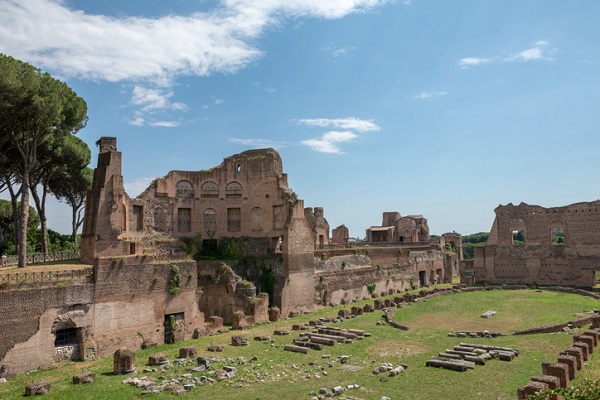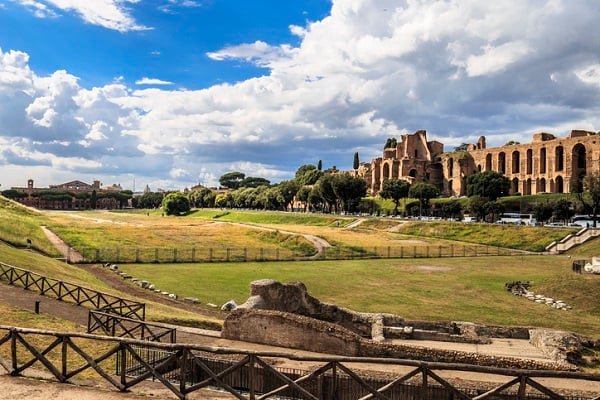

This is a must-visit for ancient Roman history buffs—and horse lovers, too. It’s of Rome’s most iconic ancient landmarks and one of the largest sporting venues ever constructed. The Circus Maximus is a former chariot racing stadium that was also the biggest in the ancient Roman Empire. Located a stone’s throw away from the Colosseum, between the Palatine Hill and the Aventino, the stadium measures 150 yards wide and 650 long.
As a stadium that hosted various kinds of spectacles in its time, it’s a venue that could not only hold approximately 150,000 people (though exact capacity numbers are uncertain), but that developed quite the history—and not just because Julius Caesar helped with its development. Here’s why any student studying abroad should visit the Circus Maximus in Rome.
You’ll See an Important and Fascinating Part of Ancient Roman History
The Circus Maximus opened its first starting gates all the way back in 329 BC (though the track between the Palatine Hill and the Aventino was built during the sixth century BC) and became known for the chariot horse races it would frequently host. Chariot races used to be one of the biggest forms of entertainment in ancient Rome, and the Circus Maximus was also the city’s biggest venue for public games—or at least, the ones relating to religious festivals in Rome.

The games would range from half-day or full-day events, to ones taking place over several days, and would be sponsored either by the Roman state or its leading figures. These elaborate events would consist not only of chariot racing, but also of plays, gladiator contests, religious ceremonies, and beast hunts (known as “venatio”), among other things. Based on how important circuses like these were for entertainment in the city during those times, the Circus Maximus is an essential part of any student’s sightseeing experience while at a Rome university.
It’s Also Known for Being Susceptible to Fires—and a Particularly “Great” One
We could go on and on about how the stadium had many distinctive details, such as statues, altars, its U-shaped structure, and a triumphal arch as a tribute to the Emperor Titus. However, the Circus Maximus was also known for having suffered damage from fires on multiple occasions over the years. In fact, the Great Fire of Rome in 64 AD is believed to have been started by the emperor Nero at the Circus, and at one of the stadium’s short sides. Its wooden structure had previously been damaged by a fire in 31 BC before its reconstruction by Emperor Augustus, and would suffer through another fire in 103 AD before being rebuilt by Trajan. The Circus Maximus would be rebuilt, and occasionally expanded, shortly after each fire.
Not Much Remains, But That’s Why it’s a Must-Visit for Rome University Students
Although it was a colossal venue and a major hub for local entertainment during ancient Roman times, students who study in Rome should know that only certain parts of the Circus Maximus remain intact today after having hosted its final games around 549 AD. In fact, only the layout of the circus is visible now. Its modern usage is mainly as a public park and has been used for concerts and sports victory celebrations, such as when Italy won the 2006 FIFA World Cup. Visitors to the circus will now find a large, grassy terrace along a big oblong field, one that is a popular place to walk.
Do you want to study abroad in Rome?
Contact John Cabot University for more information!




